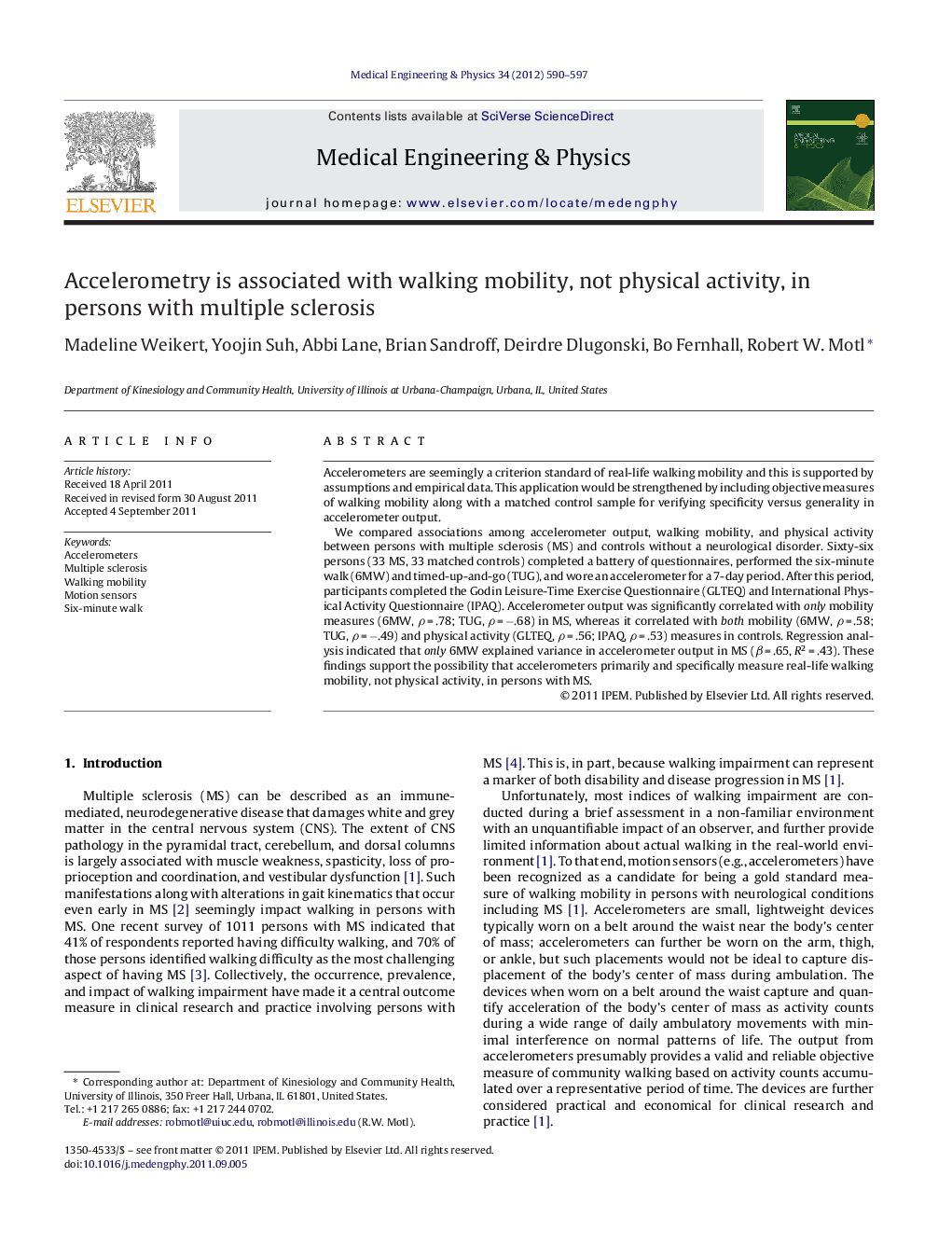| Article ID | Journal | Published Year | Pages | File Type |
|---|---|---|---|---|
| 876416 | Medical Engineering & Physics | 2012 | 8 Pages |
Accelerometers are seemingly a criterion standard of real-life walking mobility and this is supported by assumptions and empirical data. This application would be strengthened by including objective measures of walking mobility along with a matched control sample for verifying specificity versus generality in accelerometer output.We compared associations among accelerometer output, walking mobility, and physical activity between persons with multiple sclerosis (MS) and controls without a neurological disorder. Sixty-six persons (33 MS, 33 matched controls) completed a battery of questionnaires, performed the six-minute walk (6MW) and timed-up-and-go (TUG), and wore an accelerometer for a 7-day period. After this period, participants completed the Godin Leisure-Time Exercise Questionnaire (GLTEQ) and International Physical Activity Questionnaire (IPAQ). Accelerometer output was significantly correlated with only mobility measures (6MW, ρ = .78; TUG, ρ = −.68) in MS, whereas it correlated with both mobility (6MW, ρ = .58; TUG, ρ = −.49) and physical activity (GLTEQ, ρ = .56; IPAQ, ρ = .53) measures in controls. Regression analysis indicated that only 6MW explained variance in accelerometer output in MS (β = .65, R2 = .43). These findings support the possibility that accelerometers primarily and specifically measure real-life walking mobility, not physical activity, in persons with MS.
